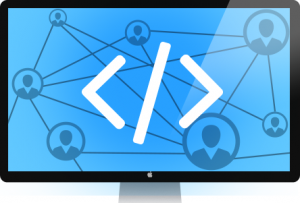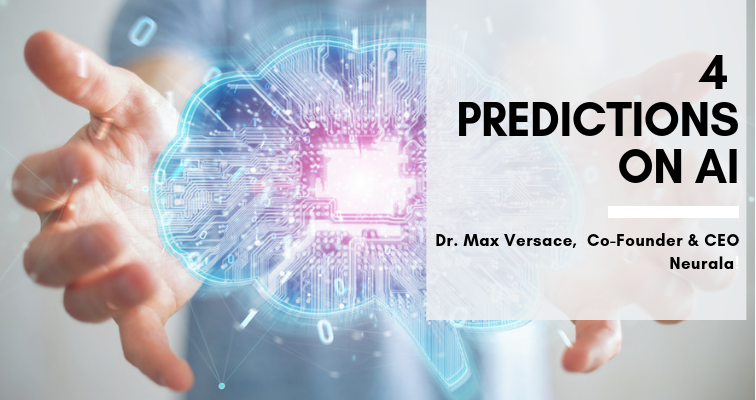1) 2019 will be the year of specialized AI built on proprietary data, and quality over quantity
 Data is the key to building smart AI systems. But AI has a data problem – AI models require massive amounts of data to train algorithms, the data preparation process is extremely time-consuming and costly, and oftentimes that data cannot be found online, or is confidential to one organization, so can’t be combined with others to create massive AI systems.
Data is the key to building smart AI systems. But AI has a data problem – AI models require massive amounts of data to train algorithms, the data preparation process is extremely time-consuming and costly, and oftentimes that data cannot be found online, or is confidential to one organization, so can’t be combined with others to create massive AI systems.
2019 will be the year of specialized AI systems built by organizations based on their own data. Given the realization that organizations sometimes have only limited amounts of data, but also require specialized data, organizations will come to realize that they need tools to easily create quality AI data internally. This quality over quantity approach will require organizations to take stock of the data they have and ask themselves key questions: is this data representative of what I’m looking for, and does it match my goal? Will the production data match this training data? Did I strike a balance between repeatability of images and variation? Is my dataset diverse?
Taking new approaches to data strategy will be make-or-break for overcoming the challenges of AI’s data problem, to develop AI that works in the real world.
2) The industry must come together to foster a global economy around AI
 2018 saw the continuation of contentious debates around technology development across national borders. In the case of AI specifically, many have advocated for the U.S. to take a competitive approach with other nations, avoiding collaborations or knowledge-sharing in light of politics, trade restrictions, and privacy concerns.
2018 saw the continuation of contentious debates around technology development across national borders. In the case of AI specifically, many have advocated for the U.S. to take a competitive approach with other nations, avoiding collaborations or knowledge-sharing in light of politics, trade restrictions, and privacy concerns.
While privacy and ethics should be central to any discussion about AI – whether domestically or abroad – the industry needs to shift its mindset toward creating a global economy around AI. AI has the potential to help solve some of the world’s most pressing challenges today and benefit society in a number of ways, but only if we open the door to conversations between the many nations leading the AI revolution.
Like any technology, AI is a tool whose applications reflect the intentions of its creator. It is up to us, as a global AI economy, to show the path, and come together to guide AI use cases in the right direction. Without a global approach, AI will fail to serve all of the communities and people that the technology has the potential to reach.
3) AI that lives and learns at the edge will save our privacy, and address AI’s learning disorder
 AI today has a learning disorder, known as the issue of “catastrophic forgetting.” When AI models need to learn something new, they typically forget what they’ve previously learned and need to be retrained. Since learning is incredibly time and (computing) resource consuming, it is done online. And, since AI needs data to learn, all pertinent (and confidential/personal) data needs to be shuttled to a server. Once data it’s gone from your device, it’s gone…and users do not have control over its fate. This technological barrier poses a potential privacy issue if the data cannot legally or morally be saved due to GDPR or other ethical standards.
AI today has a learning disorder, known as the issue of “catastrophic forgetting.” When AI models need to learn something new, they typically forget what they’ve previously learned and need to be retrained. Since learning is incredibly time and (computing) resource consuming, it is done online. And, since AI needs data to learn, all pertinent (and confidential/personal) data needs to be shuttled to a server. Once data it’s gone from your device, it’s gone…and users do not have control over its fate. This technological barrier poses a potential privacy issue if the data cannot legally or morally be saved due to GDPR or other ethical standards.
Today’s technical requirements for AI simply won’t cut it in light of current privacy standards, nor the demands for usability and adaptability of AI in deployment. In 2019, lifelong learning deep neural networks (L-DNN) will emerge as the new paradigm for AI learning. AI algorithms built on L-DNN will be able to learn continuously, in the same way that the human brain does. And, L-DNN can enable lifelong learning at the edge and directly on devices, eliminating the need to send all the confidential and private training data to a server. Taking a new approach to AI learning is the only way to build solutions that are both useful and respectful of people’s privacy.
4) While AI education will be reimagined to address the AI skills gap, new tools will emerge to lower the barrier to AI
 There’s been a lot of hype around the quickly growing AI movement in recent years. But the reality is, there simply aren’t enough developers or AI talent to make the technology deliver on its promise. By some estimates, there are only about 300,000 AI engineers worldwide, but millions are needed. In terms of PhDs, there are 22,000 of them in AI worldwide, with a fixed cost of 4 year program to create a new one from scratch.
There’s been a lot of hype around the quickly growing AI movement in recent years. But the reality is, there simply aren’t enough developers or AI talent to make the technology deliver on its promise. By some estimates, there are only about 300,000 AI engineers worldwide, but millions are needed. In terms of PhDs, there are 22,000 of them in AI worldwide, with a fixed cost of 4 year program to create a new one from scratch.
In 2019, we’ll see organizations – ranging from startups, to academic institutions, to tech behemoths and the like – revisit the current AI education system and approaches to AI training, to help close the skills gap, and foster the next generation of AI talent. We’ve already seen investments of this nature from leading universities like MIT, which recently announced a new college of computing to address the impending implications of AI. Microsoft also launched new training programs to address the shortage of AI skills in business and academia. And start-ups – including Neurala – are joining the cause too. We recently announced that we’re partnering with academic institutions and developer education programs to devise a new AI curriculum, and provide tools to help students enhance their skill set.
However, the extended training required to create a skilled AI Engineer or PhD will need to be compensated by lowering the “AI skills barrier” for current software engineers. This will be done via new software tools that require less and less knowledge of what’s under the “AI hood,” but still allow organizations to reap the benefits of this technology in their workflow.

